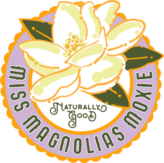Elder, (Sambucus canadensis, Honeysuckle Family)
Common Name: Sambucus, American Elder, Sweet Elder
Medicinal Part: Flowers, Berries, Root, Bark, Leaf
Description: This is a common, well-known native American plant from five to twelve feet high with a shrubby stem filled with a light and porous pitch, especially when young. The bark is rather scabrous (rough as if covered with scabs) and cinereous (ash grey). The leaves are nearly bi-pinnate (having the leaflets themselves divided into smaller leaflets), antiposed (direct opposite). The flowers are numerous, white, in very large level-topped, five parted cymes and have a heavy odor. The European Elder, though larger than the American kind, is similar in its general characteristics and properties. It is an indigenous shrub growing in all parts of the United States, in low, damp grounds, thickets and waste places, flowering in June and July and maturing its berries in September and October. The officinal (therapeutic, medicinal, healing) parts are the flowers, berries and the inner bark.
Properties and Uses: The warm infusion of the flowers is said to be diaphoretic (inducing sweating) and gently stimulant. In cold infusion, they are diuretic and cooling. The expressed juice of the berries evaporated to the consistency of a syrup is a valuable aperient (relieves constipation) and alterative (restore the proper function of the body ); one ounce of it will purge. An infusion of the young leaf buds is likewise purgative and sometimes acts with violence. The juice will purge moderately in doses from half a fluid ounce to a fluid ounce. Beaten with lard or cream, it forms an excellent discutient (causing disappearance) ointment of value for burns and scalds. A tea of the root in half-ounce doses, taken daily acts as a hydragogue (causing the discharge of watery fluid, as from the bowels), cathartic (accelerates defecation) and stimulating diuretic. In most European countries, herbalists and country folk made (and still make) a distinction between the flowers, berries, bark and leaf. While they sometimes share similar properties, try to keep to the following guidelines:
1. Flower: promotes sweating, resolve phlegm/damp, promotes diuresis (increased production of urine) and treat other urinary conditions, clears toxic heat and inflammation
2. Berry: promotes sweating, cold/flu alterative, relieves acute or chronic neuralgias (pain due to an irritated or damaged nerve), constipation, deficient lung, and food poisoning
3. Inner bark and root: relieves water congestion, nephritis (inflammation of the kidneys), obstinate constipation, rheumatism, gout
4. Leaf: relieves damp heat (ointment), skin cancer, and diabetic skin conditions
Dose and Preparation:
1. Flower: 6-14 g. infusion; 2-4 ml tincture
2. Berry: 15 ml, 4x
3. Root, Bark: half-ounce doses for difficult constipation (with caution)
4. Leaf: standard oil infusion
Sources: The Herbalist, Energetics of Western Herbs

